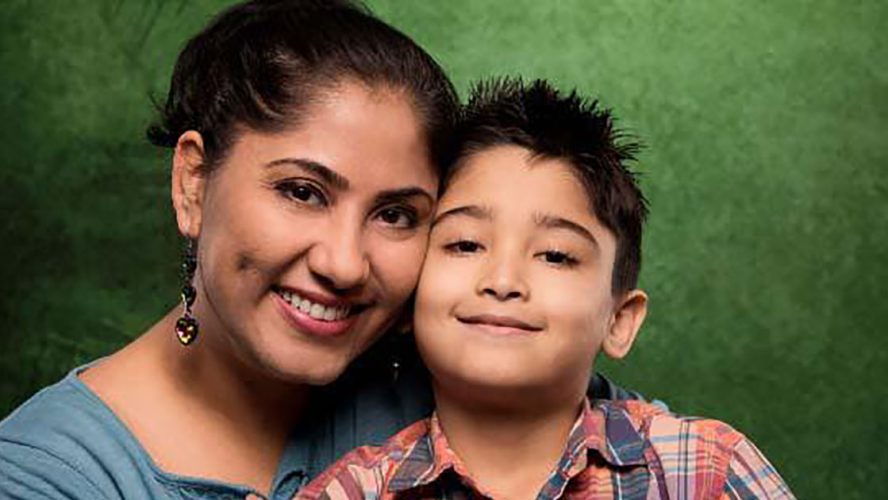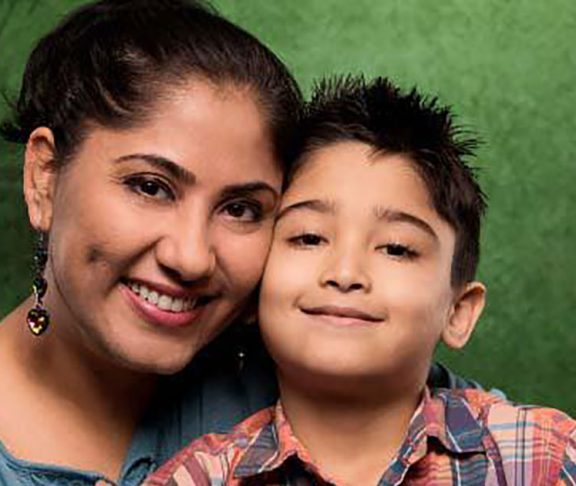Rushi Gandhi will be 10 this summer but he’s already had nearly 300 blood transfusions. Unfortunately, it’s a regular part of life for the boy who was born with an inherited blood disorder called Beta Thalassemia Major. His only chance for a cure is a blood stem cell transplant from a matching donor.
Before he was born, Rushi was diagnosed with the blood disorder, which is also called Cooley’s Anemia. Having the condition means his body doesn’t make enough hemoglobin, the iron-rich protein found in red blood cells. He’s severely anemic because his body can’t deliver the necessary oxygen that his organs require. As a result, he gets blood transfusions every three weeks to manage his condition.
Complications
People with Beta Thalassemia Major can have serious health issues. Blood transfusions can cause iron to build up in the heart, putting strain on the organ. Kidney, spleen, and liver problems also contribute to the risk of shortened life expectancy.
Rushi’s heart races whenever he’s active or gets excited. He gets tired easily and sometimes his heart races for no apparent reason. Worried about his heart health, his parents and doctors won’t allow him to participate in sports, even though he really wants to play baseball, soccer and join his school’s running club.
“It’s getting to him,” says his mother, Nilima Gandhi, who like Rushi’s father Kalpesh, is from the state of Gujarat in India. “I see him forcing himself to play on the computer trying to forget that he can’t do what other kids can. It’s hard as a parent to watch that, knowing his life could be in danger because of his medical condition.”
He misses out on these activities but he knows that not participating is the best thing for his health. Instead he spends his time reading and playing video games. He’s a good student who enjoys math and science. When he grows up, Rushi wants to be a professional gamer. His other dream is to own a Lamborghini since he loves exotic cars.
He rides a bike and can roller skate but the born daredevil has to be safe at all times.
“He’d love to try out stunts, but we have to have him slow down, and seeing his disappointment hurts us as parents,” says his mother. “We just want him to find a donor so he can be healthy.”
Searching for a match
Rushi and his family, who live in Houston, are eager to find potential donors. They’re working with Be the Match, which is run by the non-profit National Marrow Donor Program®. The organization connects patients and donors for life-saving blood stem cell transplants.
Since the boy is of Indian heritage, a donor who’s also of South Asian heritage is his best chance of finding a match.
According to Be the Match, Asians have a 41 percent chance of finding a matching donor, compared to 77 percent of whites. Ethnicity is a significant factor since many blood markers are inherited. But currently there are no matching donors on the international registry. In fact, less than 1.3% the 20 million potential donors on the Be The Match Registry identify as South Asian.
Register to donate
The family has a Facebook page where they share updates about Rushi’s health. They encourage would-be donors, especially those of Asian ethnicity, to get screened in a simple two-minute test.
Healthy adults, ages 18 to 44 years can visit http://join.bethematch.org/marrowrushi to fill out a brief health history. They can request a swab kit, swab the inside of their cheek and mail the kit back.
Within weeks, donors will receive their registration card. If they’re a match for Rushi or another patient, they’ll be asked to do further testing. About one in 430 people on the Be The Match Registry go on to donate blood stem cells.



